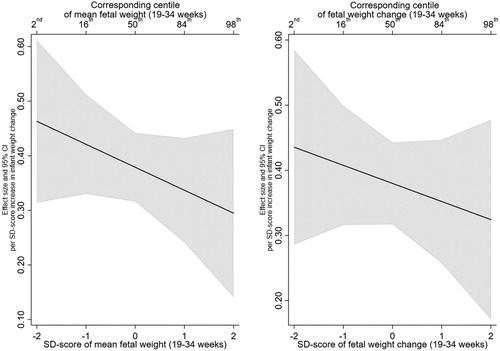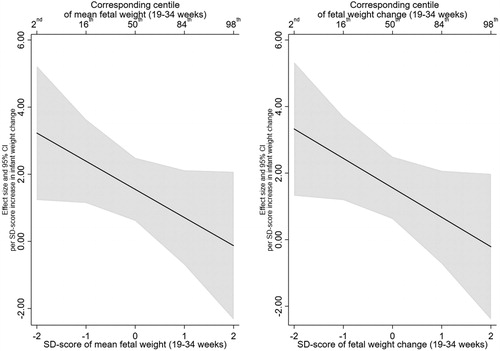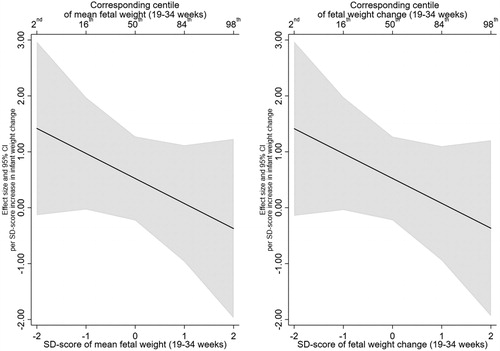Figures & data
Table 1. Fetal, infant, and maternal characteristics (n = 786).
Table 2. Relationship of infant weight gain between ages 0–2 years with adiposity and blood pressure outcomes at age 6–7 years.
Figure 1. Estimated relationship of infant weight gain (0-2 years) with BMI z-score (6–7 years), across the distribution of mean fetal weight (19–34 weeks) and fetal weight change (19-34 weeks).
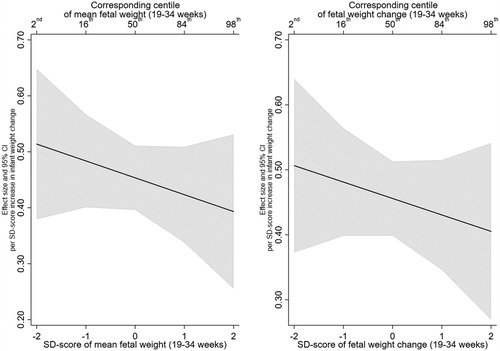
Table 3. Confounder-adjusted relationships of infant weight gain between ages 0–2 years with adiposity and blood pressure outcomes at age 6–7 years, testing for interactions with fetal weight variables.
Figure 2. Estimated relationship of infant weight gain (0–2 years) with per cent body fat (6–7 years), across the distribution of mean fetal weight (19–34 weeks) and fetal weight change (19–34 weeks).
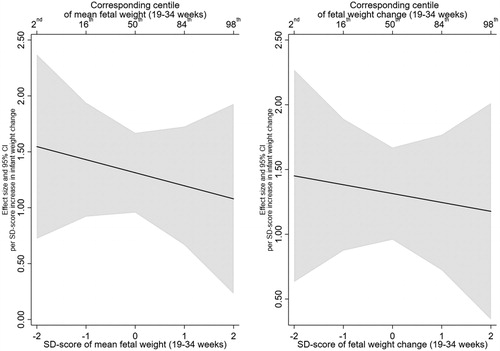
Figure 3. Estimated relationship of infant weight gain (0–2 years) with trunk fat (kg) (6–7 years), across the distribution of mean fetal weight (19–34 weeks) and fetal weight change (19–34 weeks).
